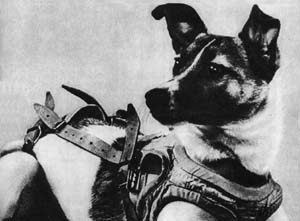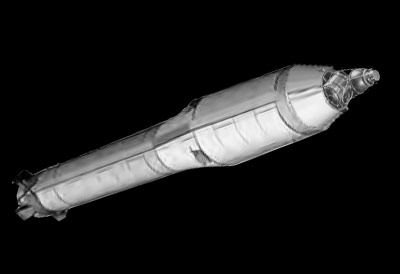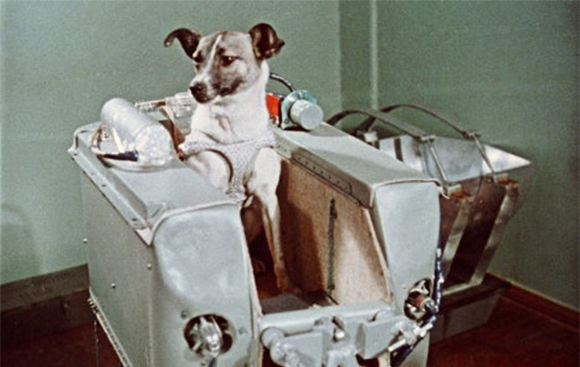Today, November 3rd 2017 marks 60 years since the launch of Sputnik 2, the second satellite to orbit the Earth. Sputnik 2 was quite different from Sputnik 1, though, and not just in that it was much heavier – while Sputnik 1 just flew around and beeped, day in, day out, for about 3 week, Sputnik 2 carried something more special on it – a dog named Laika.
In their rush to prove the superiority of the Soviet system, The U.S.S.R had produced a spacecraft that could support the life of a small animal for a time. The Satellite weighed nearly half a ton, as opposed to the just over 100 lbs that Sputnik 1 weighed, and would be launched rather quickly after Sputnik 1 – just a day shy of a month after that previous launch.
The mission was so rushed, in fact, that what would normally be a critical process for sending a living thing into orbit was skipped – Sputnik 2 was not designed to return to the Earth. Laika would fly a mission she would not survive.

Indeed, designing systems to return living creatures to Earth would be a primary challenge for the next few years, before the Soviet Vostok and the American Mercury programs would (literally) get off the ground, but in these dawn moments of the Space Age, the goal, in the Soviets case, was simply to prove they could do this, and that the United States couldn’t.
Something of note is that, instead of releasing from the R-7 missile that launched it, Sputnik 2 stayed attached to the rockets core stage, using the telemetry systems of the booster to relay the complex data set that contained Laika’s vital stats.
The official story states that Laika survived a week in orbit before she was euthanized, with Sputnik 2’s transmission system also failing about this time. In reality, we would learn in the early 2000’s that Laika died just a few hours into her flight – the life support system, it would seem, didn’t behave as well as it was designed to, and Laika died of exhaustion as heat and humidity increased in the capsule. Certainly sad to think about and many today regard the entire event as cruel and inhumane.
Perhaps, but hindsight is 20/20. We do have to keep in context that the origins of the Space Race was simply one nation proving it’s missiles were better than the others. These machines were designed to send nuclear weapons to the enemy – them launching research probes or even life forms were just secondary, example uses that, thankfully, became primary purposes as time went on.
Laika’s sad end proved that a complex animal could go into orbit, and even the circumstances about her death certainly helped the Soviets design a better system for what would become Vostok and Voshkod, allowing the amazing missions they had in the early 60’s.
As for Laika, I see footage and photos of her strapped into her flight harness and I smile; I don’t intend to ignore her death, but like any tragic event of any kind I try to find the good in it, and here, we have a cute little dog, of all creatures, being the first animal to orbit the Earth, something still only a tiny fraction of humans have done.
For those interested in more, I have links down below, including my article last year on the 59th anniversary of this launch.
http://russianspaceweb.com/sputnik2.html
https://en.wikipedia.org/wiki/Sputnik_2
https://www.xadara.com/59-years-ago-sputnik-2-and-a-dog-in-space/
